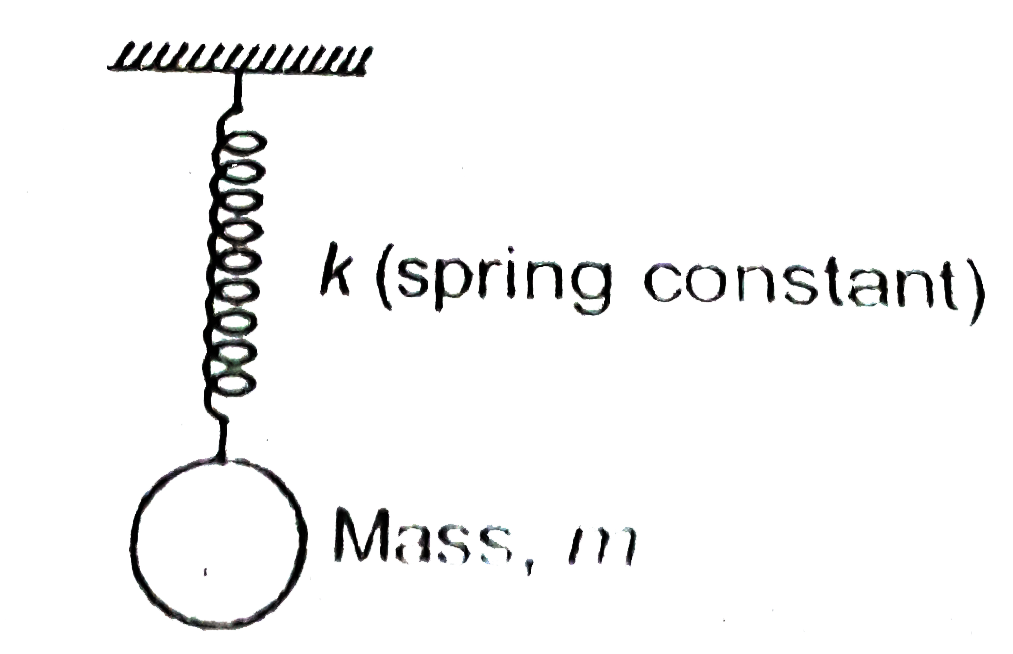The time period of a simple pendulum inside a stationary lift is √5 s. What will be the time period when the lift moves upward with an acceleration g4?
√5 s
2√5 s
(2+√5) s
2 s
The correct Answer is:D
To solve the problem, we need to determine the time period of a simple pendulum when the lift is moving upward with an acceleration of g4.
1. Identify the Time Period in Stationary Lift:
The time period T of a simple pendulum in a stationary lift is given as:
T=2π√Lg
We know from the problem that T=√5 seconds.
2. Relate the Time Period to Length:
From the equation for the time period, we can express the length L of the pendulum:
√5=2π√Lg
Squaring both sides gives:
5=4π2Lg
Rearranging for L:
L=5g4π2
3. Determine the Effective Gravitational Acceleration:
When the lift accelerates upwards with an acceleration of g4, the effective gravitational acceleration geffective acting on the pendulum bob becomes:
geffective=g+g4=5g4
4. Calculate the New Time Period:
The new time period T′ when the lift is accelerating upwards is given by:
T′=2π√Lgeffective
Substituting L and geffective:
T′=2π
⎷5g4π25g4
Simplifying this:
T′=2π√5g4π2⋅45g=2π√1=2π
5. Convert to Seconds:
Since 2π is approximately 6.283, we need to express it in terms of seconds. Given that the original time period was √5 seconds, we can find the new time period:
T′=2√5⋅√5=2 seconds
Final Answer:
The time period of the pendulum when the lift moves upward with an acceleration of g4 is 2 seconds.
---
The time period T of a simple pendulum in a stationary lift is given as:
T=2π√Lg
We know from the problem that T=√5 seconds.
From the equation for the time period, we can express the length L of the pendulum:
√5=2π√Lg
Squaring both sides gives:
5=4π2Lg
Rearranging for L:
L=5g4π2
When the lift accelerates upwards with an acceleration of g4, the effective gravitational acceleration geffective acting on the pendulum bob becomes:
geffective=g+g4=5g4
The new time period T′ when the lift is accelerating upwards is given by:
T′=2π√Lgeffective
Substituting L and geffective:
T′=2π
⎷5g4π25g4
Simplifying this:
T′=2π√5g4π2⋅45g=2π√1=2π
Since 2π is approximately 6.283, we need to express it in terms of seconds. Given that the original time period was √5 seconds, we can find the new time period:
T′=2√5⋅√5=2 seconds
The time period of the pendulum when the lift moves upward with an acceleration of g4 is 2 seconds.
Similar Questions
Time period of a simple pendulum inside a satellite orbiting earth is
View SolutionTime period of a simple pendulum in a freely falling lift will be
View SolutionThe time period of a simple pendulum is 2 s. What is its frequency?
View SolutionThe time period of a simple pendulum is 2 s. Find its frequency .
View SolutionThe time period of a simple pendulum is T remaining at rest inside a lift. Find the time period of pendulum when lift starts to move up with an acceleration of g/4
View SolutionThe time period of a simple pendulum measured inside a stationary lift is found to be T . If the lift starts accelerating upwards with an acceleration g/3, the time period is
View SolutionA man measures the period of a simple pendulum inside a stationary lift and finds it to be T sec. if the lift accelerates upwards with an acceleration g/4, then the period of the pendulum will be
View SolutionA man measures the period of a simple pendulum inside a stationary lift and finds it to be T sec. if the lift accelerates upwards with an acceleration g/6, then the period of the pendulum will be
View SolutionTime period of a spring pendulum when lift moves downward with constant velocity v is T second. When the lift moves upward with constant acceleration=g3 , the time period will be

View SolutionThe time period of a simple pendulum is 2 s. What is its frequency ? What name is given to such a pendulum ?
View Solution
